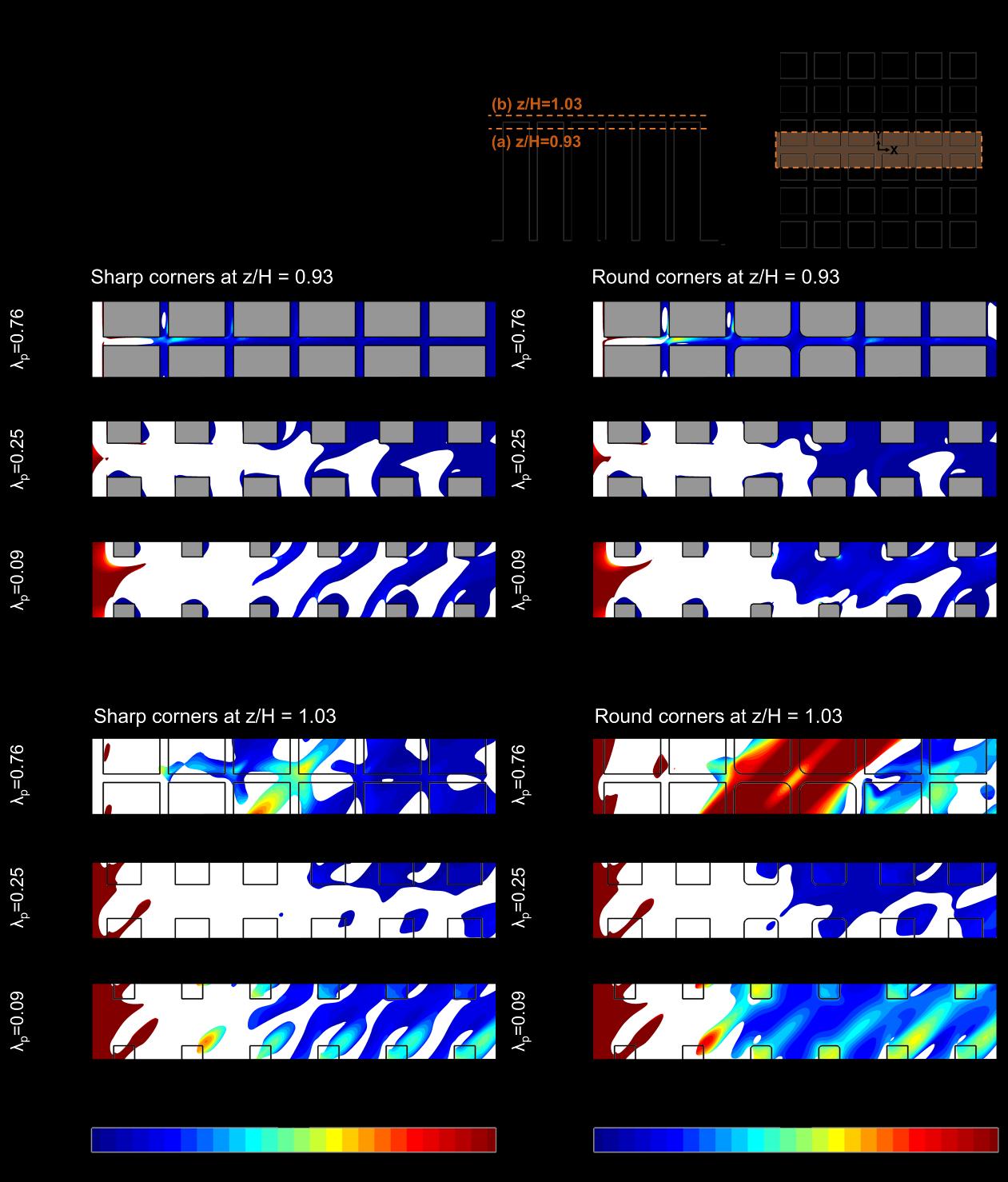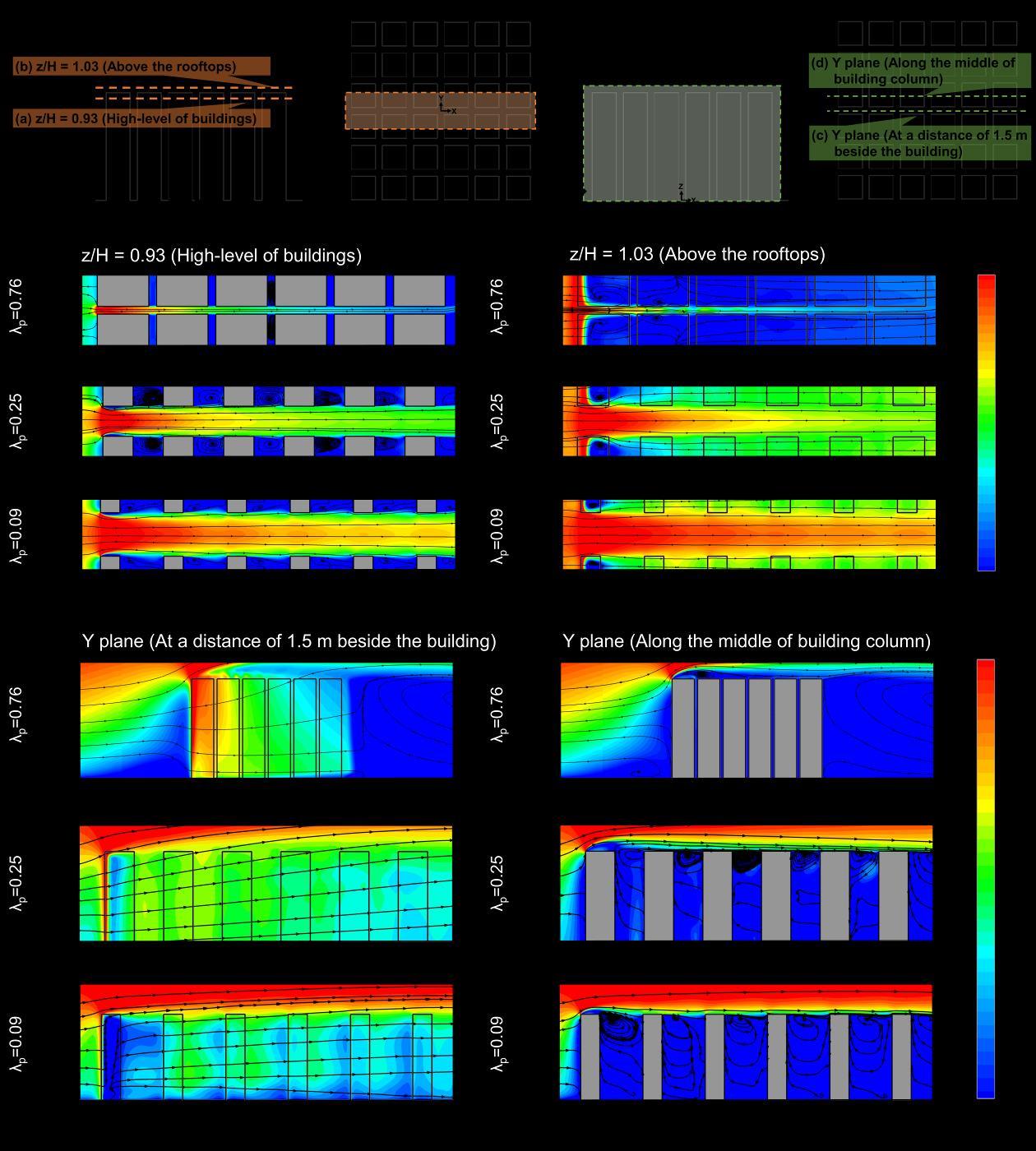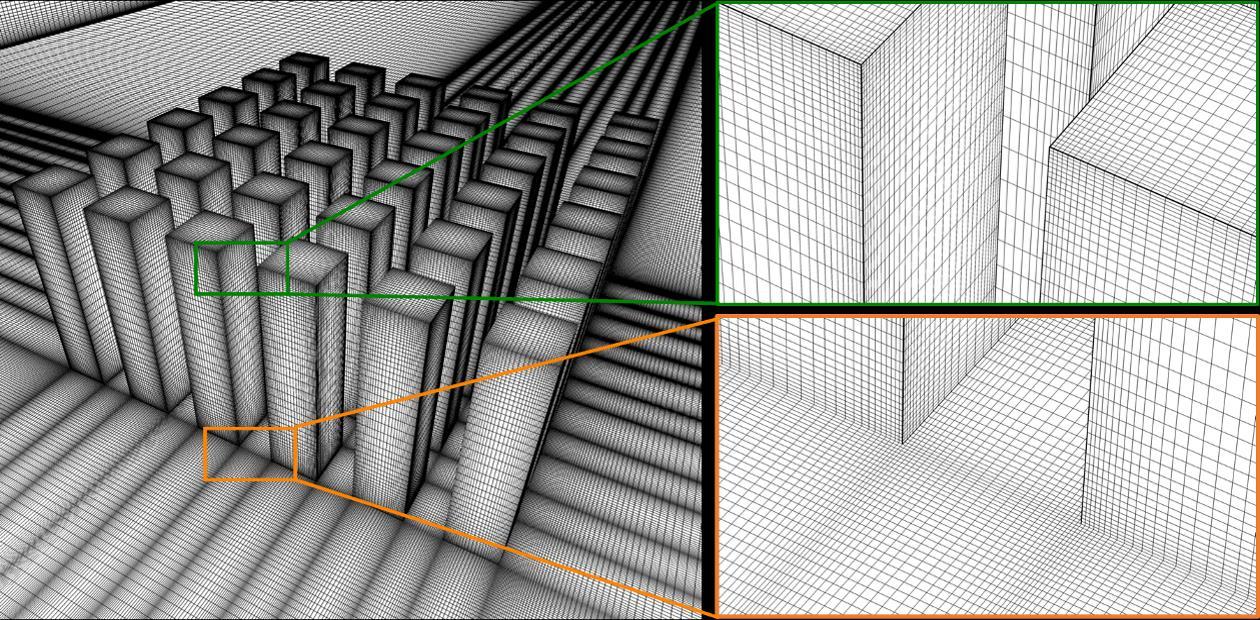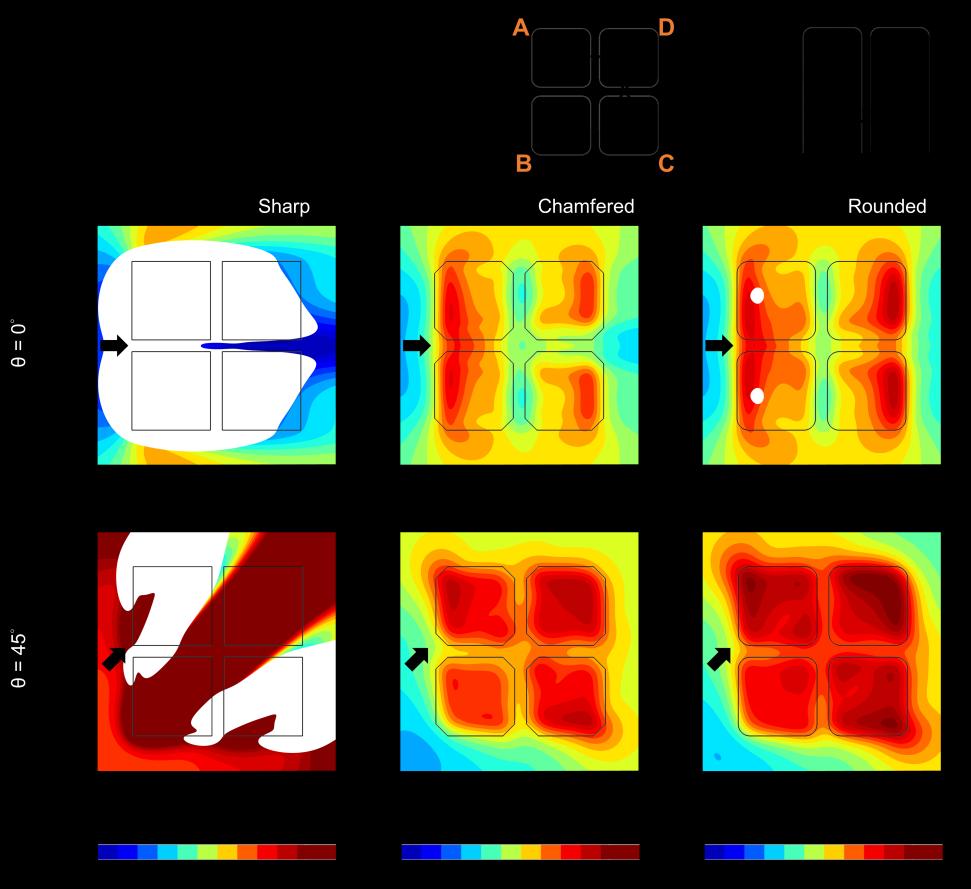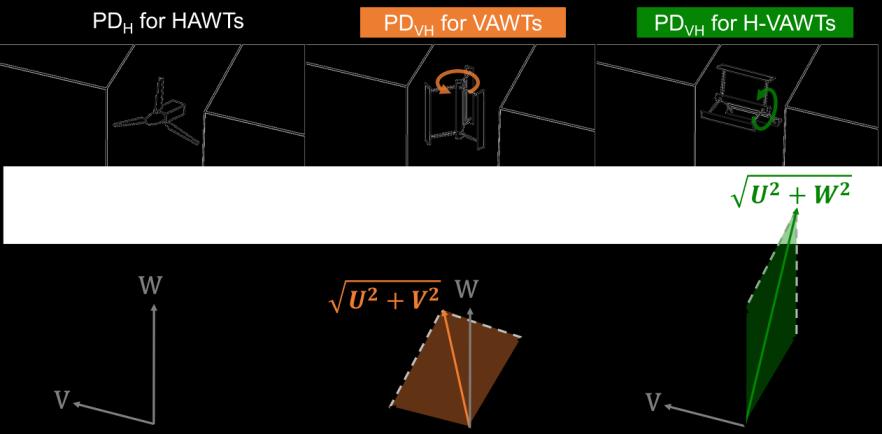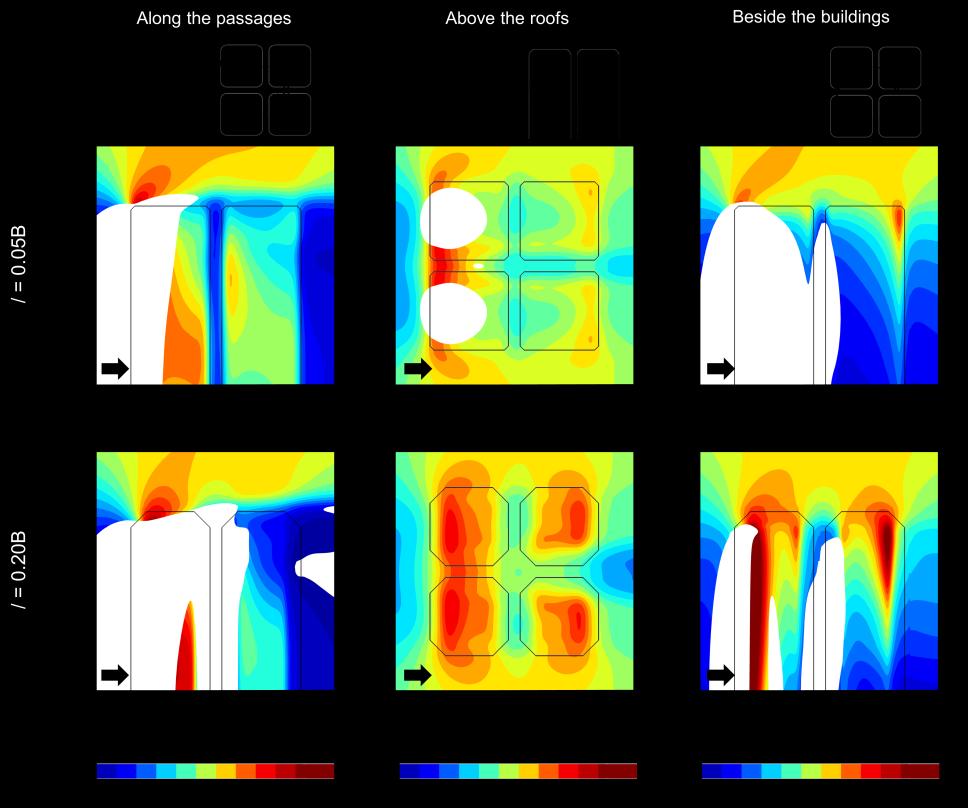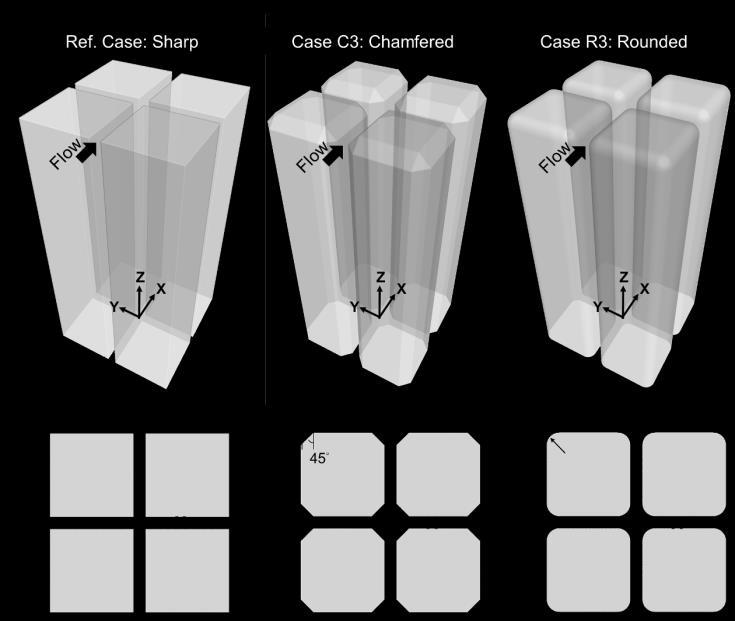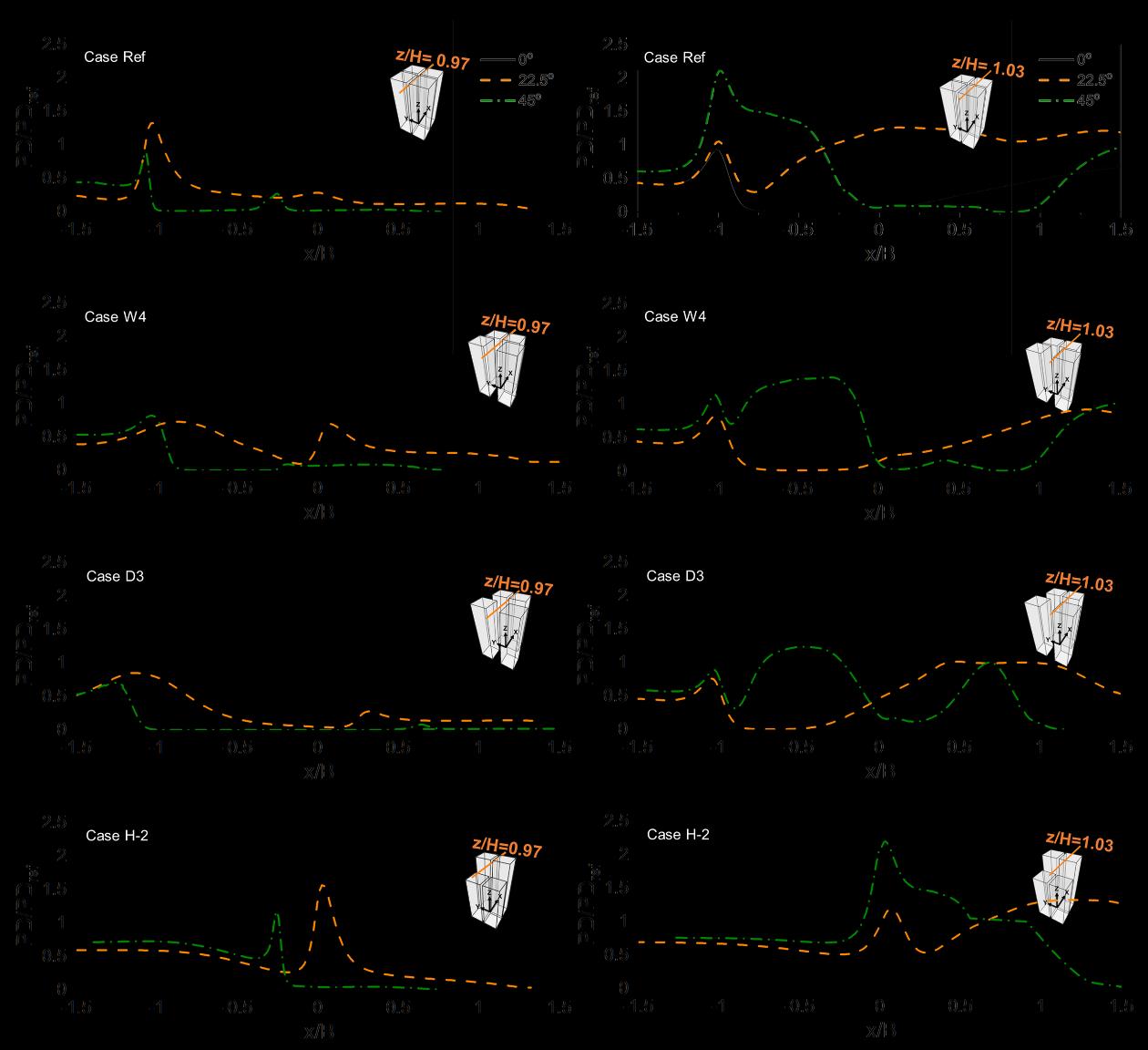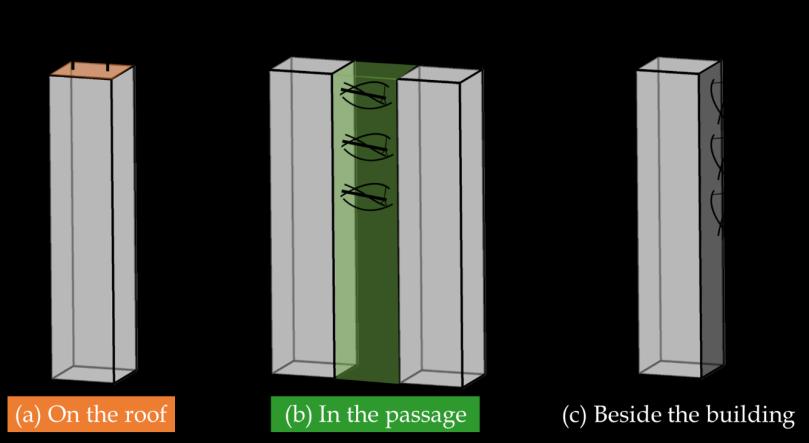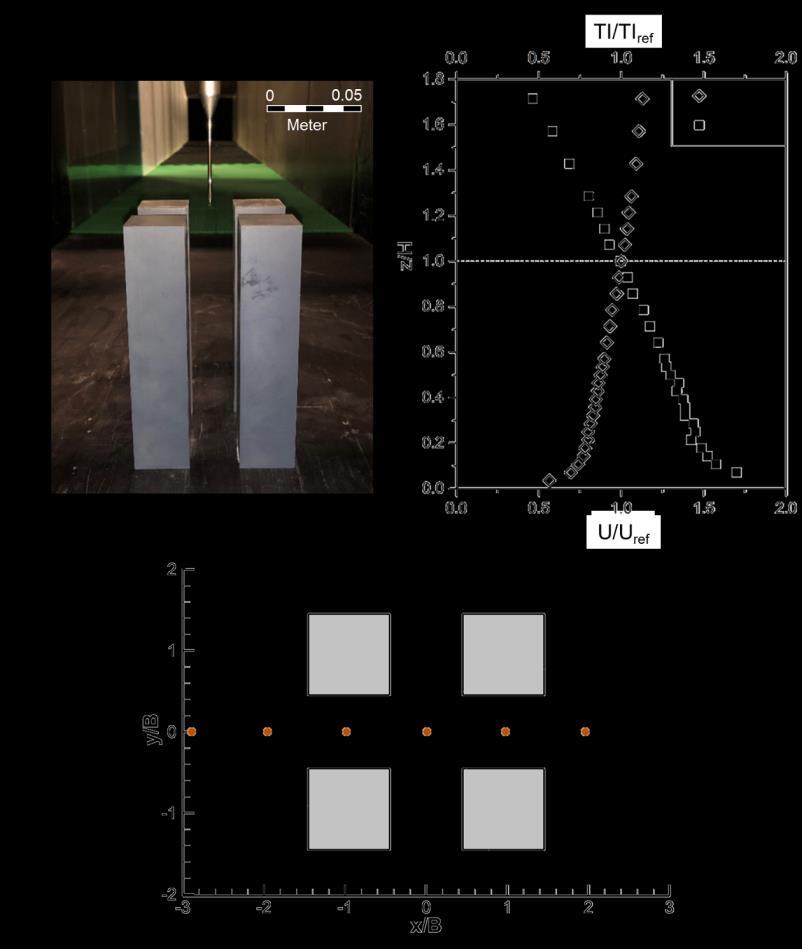Urban wind energy potential: Impacts of urban density and layout
75
grid numbers for all cases vary approximately 18-26 million, consisting of the hexahedral and prismatic cells only.
Figure 4.6. Computational mesh of Case A4 for the base grids, with magnification of grids near roof and ground.
4.3.3
Computational settings
The neutral atmospheric boundary layer inflow profiles of mean wind velocity U, turbulent kinetic energy k, and turbulence dissipation rate ε are prescribed at the inlet [126]. 𝑈(𝑧) =
∗ 𝑢𝐴𝐵𝐿
𝜅
𝑙𝑛 (
𝑧+𝑧0 𝑧0
∗ 2 𝑘(𝑧) = 3.3𝑢𝐴𝐵𝐿 ∗ 𝑢𝐴𝐵𝐿 =
𝜅𝑈ℎ 𝑙𝑛(
ℎ+𝑧0 ) 𝑧0
)
(4.1) (4.2) (4.3)
here z is the height coordinate, u*ABL is ABL friction velocity, and κ is the von Karman constant (of 0.42). In Eq (4.1), the aerodynamic roughness length (z0) is 1 m for treating the surroundings of studied high-rise buildings in a densely built-up area by the updated Davenport-Wieringa roughness classification [100] (see Section Classification comparison and an update in Ref. 59). In Eq (4.3), the friction velocity (Uh) is 5m/s at the height of 10 m, while the reference wind speed (Uref) of 9.4 m/s at the reference height of 90 m. The standard wall functions with roughness modifications are employed on the ambient ground with the associated roughness height ks of 0.15 and roughness constant Cs of 8, respectively. All CFD simulations are performed by the 3D steady RANS equations with the RSM model. No-slip boundary conditions and the standard wall functions are implemented to the building surfaces. The zero-gauge static pressure is set at the outlet surface of the computational domain, while the symmetric conditions are imposed on the top and lateral surfaces. All the normalized residual errors of flow variables converge to 10−6 with the mass balance check under 1% to attain the steady wind field environments.


